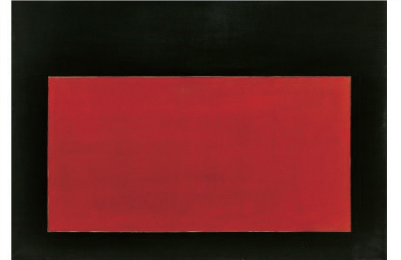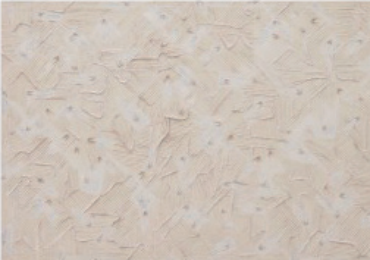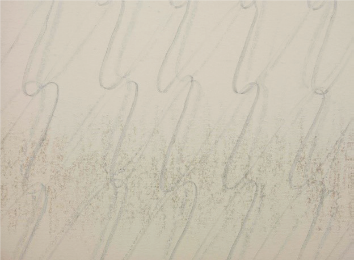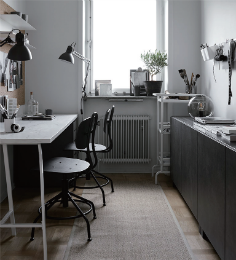As a new semester creates opportunities for meeting new friends, art may be a great icebreaker for striking up conversations with strangers. In the field of art, Monochrome, especially that of Korea, is receiving a global attention with a high growth potential. Moreover, the artist Kim Min Jung has been invited to showcase her pieces at the White Cube Gallery, a globally renowned Western gallery, providing more chances for development of the Korean arts. Accordingly, the Sungkyun Times (SKT) looks into Monochrome: its history, its development in Korea, its major characteristics, and its connection with everyday life.
What Is Monochrome?
Definition of Monochrome and its History
Prior to the 19th century, Romanticism and Realism featured conventional art, but they soon lost their popularity by the end of the 19th century. The key characteristic of Romanticism was to use emotions freely to convey passionate expressions through vibrant tones. On the other hand, Realism strictly focused on producing realistic art pieces, discouraging the use of glamorization. Such limitations deprived artists of their creativities, and for that artists broke away from conventional techniques and decided to incorporate their own methods and philosophies to their newest pieces by the end of the 19th century; they created Monochrome. Monochrome is characterized by the single usage of an achromatic color such as black or white. It was introduced for the first time by French author Jules Lévy in the late 19th century, when the conventional art started to decline. In order to satirize the society, Jules Lévy opened a series of art galleries called the Incoherents, which exhibited art pieces of non-artists, especially caricatures. As the Incoherents grew popular, artists such as Paul Bilhaud and Ribert Fludd started to use monochrome techniques as well. Amongst others, Kazimir Malevich is believed to be the founder of Monochrome. In particular, his work Black Square in 1915, broke down the differences between form and background, simultaneously using a single color.
Development of Monochrome in Korea
The Korean arts in the 1970s was believed to be missing its own unique style. Experts widely believed that the Korean arts merely imitated Western art and thus needed to produce art that could show its identity. In the meantime, the Korean arts encountered monochrome techniques through the Informel movement, which started in France and provided a worldwide movement of abstract art from 1940s to 1950s. The Informel movement broke away from using conventional techniques such as focusing on details; it encouraged the usage of new techniques and abstract expressions instead. The gestural technique of using a brush freely without any pattern was also one of the new methods. Monochrome in the Korean arts then started to be accepted internationally as one of the unique styles of Korean art, making a new paradigm. Artist Oh Kwang Soo was one of those who tried to revive the weakened position of the Korean arts by adapting Western techniques and methods. Through his efforts, Korean art galleries which accepted Monochrome art pieces started to do so more frequently by the end of 1970s. Korean art galleries such as the Seoul Contemporary Art Festival and Ecole de Seoul produced many Korean monochrome artists, leading the Korean monochrome to the top. Consequently, international galleries started to feature Korean monochrome as well.
Characteristics of Monochrome
Reducibility
Reducibility, one of the characteristics of monochrome, basically means to go back to the origin. Prior to M o n o c h ro m e a r t , three factors were crucial in forming three dimensional pieces: form, portrait of human and base. Monochrome art, however, emphasizes purity and plain features to create complanation. Therefore, in order to go back to flatness of the canvas monochrome puts down such three factors that create three dimensions.

Decolorization and White Monochrome
Decolorization, which leads to dematerialization as well, occurs when color fades over time, due to the neutralization caused by long-term exposure to light. For example, the method of repetitively erasing and coloring one color on the canvas over time with an exposure of light makes artificial color fade away, only leaving the natural color behind. Elements such as texture are restricted as well to provide a transparent and natural space on the canvas, which goes back to reducibility by emphasizing purity and simplification. By using only one color at a time, monochrome prefers to retain the natural tone of any color. Korean monochrome has a close connection with Korean culture. Known as the “white-clad folk”, Koreans were passionate about the color white throughout their history; white clothing had been the most common costume. Likewise, the color white is used in the Korean monochrome frequently, making it referred as White monochrome.

Repetitive Technique and Performance
In Monochrome, repetitive usage of a single technique is common as well. It conveys the artists’ hard efforts, long hours of work, and their patience. An artist, for example, can draw limitless lines with a pen and connect them again by using a pencil to create a black atmosphere.

Monochrome in Everyday Life
Monochrome in Fashion
Monochrome in the field of fashion is receiving global attention. Simplicity is one of the traits used in fashion to convey dematerialization. In the Street Fashion of 2017 Fall/Winter Paris Couture Fashion Week, a globally renowned fashion show which has a big impact on the field of fashion, monochrome of black and white was used, showing its popularity.

Monochrome in Architecture
Single color architecture with a modern theme, which promotes simplicity and practicality, is gaining popularity among customers. In Spain, for example, a homeless shelter constructed under a modernistic theme used a monochrome black to provide privacy to its users and received compliments from both the users and neighbors.

Monochrome in Furniture
Pella Hedeby, a Swedish interior stylist, won an Instagram Interior Contest held by IKEA on August 2017 through her monochrome interiors. IKEA’s Livet Hemma, life at home, was a contest designed to find out what makes a better life at home. Though they may look simple, Monochrome interiors proved their practicality and gained popularity among young generations.

Revival of Monochrome is not just an achievement within the Korean arts. Monochrome itself, however, is an art and a method of expression. It is found not only in the field of art, but also in the field of fashion, architecture and furniture. That is, Monochrome is now everywhere deeply within our society.
